โอ
เมื่อวันที่ 1 สิงหาคม พ.ศ. 2568 ศาลยุติธรรมแห่งสหภาพยุโรปได้ออกคำตัดสินขั้นสุดท้ายโดยยืนยันคำตัดสินปีพ.ศ. 2565
ซึ่งหมายถึงการยกเลิกการจัดประเภทสารก่อมะเร็งของผงไทเทเนียมไดออกไซด์ (TiO₂) การตัดสินใจครั้งนี้ถือเป็นการสิ้นสุดการถกเถียงทางวิทยาศาสตร์และกฎระเบียบที่ดำเนินมาเกือบทศวรรษ ซึ่งส่งผลกระทบต่อหลายอุตสาหกรรมทั่วโลก
ไทเทเนียมไดออกไซด์
ผงไทเทเนียมไดออกไซด์ถูกนำมาใช้อย่างแพร่หลายในสารเคลือบ ยา และอาหาร เนื่องจากมีคุณสมบัติในการปกปิดที่ดีเยี่ยมและมีความขาว ในปี พ.ศ. 2559 สำนักงานความปลอดภัยด้านอาหาร สิ่งแวดล้อม และอาชีวอนามัยของฝรั่งเศส (ANSES) ได้ยื่นข้อเสนอต่อสำนักงานสารเคมีแห่งยุโรป (ECHA) เพื่อขอให้จัดประเภทผงไทเทเนียมไดออกไซด์เป็น "สารก่อมะเร็งเมื่อสูดดม" ในปี พ.ศ. 2560 คณะกรรมการประเมินความเสี่ยง (RAC) ของ ECHA ได้มีมติเห็นชอบให้จัดประเภทผงไทเทเนียมไดออกไซด์เป็น "สารก่อมะเร็งประเภท 2 ที่สงสัยว่าเป็นสารก่อมะเร็ง" ในเดือนตุลาคม พ.ศ. 2562 คณะกรรมาธิการยุโรปได้ออกข้อบังคับมอบหมาย (DE) 2020/217 ซึ่งจัดประเภทไทเทเนียมไดออกไซด์ในรูปแบบผง (อนุภาคขนาด 1% หรือมากกว่า ≤10 ไมครอน) อย่างเป็นทางการให้เป็นสารก่อมะเร็งประเภท 2 ที่สงสัยว่าเป็นสารก่อมะเร็ง และกำหนดให้ติดป้ายเตือนว่า "H351: อาจก่อให้เกิดมะเร็งเมื่อสูดดม"
การจำแนกประเภทและการติดฉลากในปัจจุบันมีดังนี้:
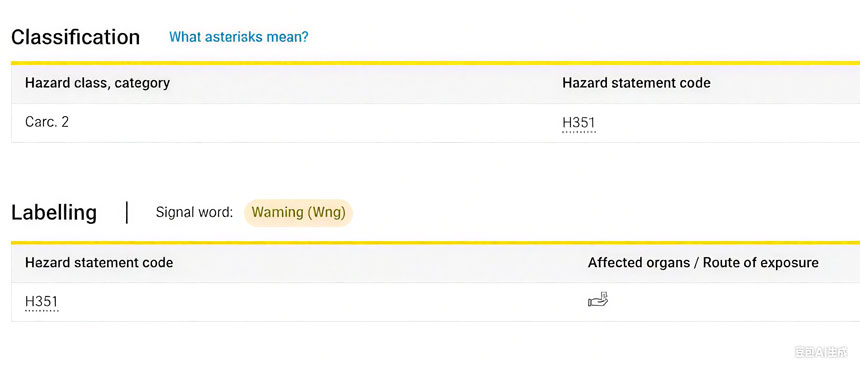

ไทม์ไลน์การจำแนกประเภทไททาเนียมไดออกไซด์
|
ปี
|
เหตุการณ์
|
ผลกระทบ
|
|
ปี 2559
|
ANSES ของฝรั่งเศสเสนอให้จำแนก TiO₂
สารก่อมะเร็ง
|
ความกังวลเบื้องต้นเกี่ยวกับกฎระเบียบถูกหยิบยกขึ้นมา
|
|
ปี 2017
|
RAC ของ ECHA สนับสนุนการจำแนกประเภทหมวด 2
|
การรับรองของคณะกรรมการวิทยาศาสตร์
|
|
ปี 2019
|
คณะกรรมาธิการสหภาพยุโรปประกาศใช้ระเบียบมอบหมาย (EU) 2020/217
|
บังคับใช้ฉลากคำเตือน H351
|
|
2022
|
ศาลทั่วไปของสหภาพยุโรปเพิกถอนการจำแนกประเภท
|
การท้าทายทางกฎหมายประสบความสำเร็จ
|
|
2025
|
ศาลยุติธรรมแห่งสหภาพยุโรปยืนยันการเพิกถอน
|
การยุติข้อพิพาทขั้นสุดท้าย
|
พื้นฐานทางวิทยาศาสตร์ของการตัดสินใจ
คำตัดสินของศาลยุติธรรมแห่งสหภาพยุโรปมีพื้นฐานอยู่บนประเด็นทางวิทยาศาสตร์ที่สำคัญสามประการ ได้แก่
1. กลไกการออกฤทธิ์:
ศาลเห็นด้วยว่าเนื้องอกปอดที่สังเกตเห็นในการศึกษากับหนูเกิดจากการรับอนุภาคมากเกินไป ไม่ใช่จากสารก่อมะเร็งใน TiO₂ เอง
2. การประมาณค่าไปยังมนุษย์:
ศาลสรุปว่าไม่มีหลักฐานเพียงพอที่จะแสดงให้เห็นว่าการศึกษาการสูดดมสารในหนูสามารถคาดการณ์ความเสี่ยงต่อการเกิดมะเร็งในมนุษย์ได้อย่างน่าเชื่อถือ โดยเฉพาะในระดับการสัมผัสปกติ
3. คำอธิบายอื่นๆ:
คำตัดสินระบุว่าผลกระทบที่สังเกตได้อาจเกิดจากการอักเสบที่เกิดจากการสะสมของอนุภาค มากกว่าจะเกิดจากพิษทางเคมี
ผลกระทบโดยตรงต่ออุตสาหกรรม
การตัดสินใจครั้งนี้จะช่วยบรรเทาปัญหาต่างๆ ให้กับอุตสาหกรรมต่างๆ ได้อย่างมาก:
สีและสารเคลือบผิว
-
กำจัดป้ายเตือนบนวัสดุเคลือบสถาปัตยกรรมและอุตสาหกรรมส่วนใหญ่
พลาสติก
-
ลดภาระการจำแนกประเภทบรรจุภัณฑ์อาหารและสินค้าอุปโภคบริโภค
เครื่องสำอาง:
ครีมกันแดดและเครื่องสำอางสีสามารถวางตลาดได้โดยไม่ต้องมีคำเตือนเรื่องสารก่อมะเร็งอีกต่อไป
อุตสาหกรรมอาหาร:
ฟื้นคืนความเชื่อมั่นในการใช้ TiO₂ (E171) ในการใช้งานด้านอาหาร
ผลกระทบด้านกฎระเบียบระดับโลก
แม้ว่าการตัดสินใจของสหภาพยุโรปจะมีผลผูกพันต่อประเทศสมาชิก แต่ภูมิภาคอื่นอาจมีปฏิกิริยาแตกต่างกันออกไป:
เรา:
สำนักงานความปลอดภัยและอาชีวอนามัย (OSHA) ยังคงรักษาการจำแนกประเภทที่ไม่ก่อให้เกิดมะเร็งในปัจจุบัน
แคนาดา:
กระทรวงสาธารณสุขของแคนาดายังคงติดตามหลักฐานที่เกิดขึ้นใหม่
เอเชีย:
ตลาดส่วนใหญ่ไม่เคยนำการจำแนกประเภทข้อควรระวังของสหภาพยุโรปมาใช้
ผลิตภัณฑ์ที่มีส่วนผสมของไททาเนียมไดออกไซด์
TiO₂ ยังคงมีความจำเป็นในผลิตภัณฑ์ทั่วไปหลายๆ ชนิด:
|
หมวดหมู่สินค้า
|
ฟังก์ชัน TiO₂
|
ความเข้มข้นโดยทั่วไป
|
|
สี
|
สารทึบแสง/สีขาว
เนอร์
|
15-25%
|
|
พลาสติก
|
สารป้องกันรังสียูวี
|
0.5-5%
|
|
ครีมกันแดด
|
ฟิลเตอร์ UV
|
2-10%
|
|
อาหาร (E171)
|
สีผสมอาหาร
|
0.1-1%
|
|
กระดาษ
|
สารเพิ่มความขาว
|
2-8%
|
คำตัดสินขั้นสุดท้ายของศาลยุติธรรมแห่งสหภาพยุโรป (EU) ให้ความชัดเจนที่จำเป็นอย่างยิ่งเกี่ยวกับความปลอดภัยของไทเทเนียมไดออกไซด์ ซึ่งยืนยันจุดยืนของนักวิทยาศาสตร์และผู้ผลิตหลายราย แม้ว่าการเฝ้าระวังด้านกฎระเบียบยังคงมีความสำคัญ แต่คำตัดสินนี้ช่วยให้อุตสาหกรรมสามารถใช้ประโยชน์จากคุณสมบัติอันทรงคุณค่าของไทเทเนียมไดออกไซด์ได้โดยไม่ต้องมีคำเตือนเกี่ยวกับสารก่อมะเร็งที่ไม่จำเป็น
คำถามที่พบบ่อย
คำถามที่ 1: ไททาเนียมไดออกไซด์ผง TiO2 คืออะไร?
A: ไททาเนียมไดออกไซด์เป็นไททาเนียมออกไซด์ที่เกิดขึ้นตามธรรมชาติซึ่งใช้เป็นเม็ดสีขาวและสารเติมแต่งฟังก์ชันในการใช้งานในอุตสาหกรรมและผู้บริโภคมากมาย
คำถามที่ 2: เม็ดสีทั่วไปชนิดใดที่มีไททาเนียมไดออกไซด์เป็นส่วนประกอบ?
A: เม็ดสีที่สำคัญหลายชนิดประกอบด้วยไททาเนียมไดออกไซด์:
ไททาเนียมไดออกไซด์ (TiO₂): เม็ดสีไททาเนียมไดออกไซด์บริสุทธิ์
เม็ดสีมุก
:มักใช้ไมก้าเคลือบไททาเนียมไดออกไซด์เพื่อให้เกิดเอฟเฟกต์สีรุ้ง
เม็ดสีผสม: เม็ดสีหลายชนิดผสมไททาเนียมไดออกไซด์กับสีอื่นๆ
คำถามที่ 3: ไททาเนียมไดออกไซด์ปลอดภัยต่อการใช้ในเครื่องสำอางหรือไม่?
ตอบ: ปลอดภัยสำหรับการใช้งานตามวัตถุประสงค์ คำตัดสินของสหภาพยุโรปยืนยันอย่างชัดเจนว่าไม่มีหลักฐานว่าสารนี้ก่อให้เกิดมะเร็งจากการสัมผัสทางผิวหนัง
ไตรมาสที่ 4: ไททาเนียมไดออกไซด์เกรดอาหาร (E171) จะได้รับการอนุมัติอีกครั้งในสหภาพยุโรปหรือไม่
A: แม้ว่าคำตัดสินของศาลจะไม่นำ E171 กลับมาใช้โดยอัตโนมัติ แต่ก็ได้ลบล้างพื้นฐานทางวิทยาศาสตร์สำหรับการห้ามในปี 2022 ซึ่งอาจเปิดทางไปสู่การพิจารณาใหม่
คำถามที่ 5: ผู้ผลิตควรอัปเดตฉลากผลิตภัณฑ์ของตนอย่างไร?
ก:
1. บริษัทควร: ลบคำเตือน H351 ออกจากผลิตภัณฑ์ที่มีไททาเนียมไดออกไซด์ทันที
2. ตรวจสอบเอกสารข้อมูลความปลอดภัยเพื่ออัปเดตให้เป็นไปตามข้อกำหนด
3. ปรึกษาหารือกับทีมกฎหมายของคุณเกี่ยวกับข้อกำหนดการติดฉลากช่วงเปลี่ยนผ่าน
โดย ดร. ลิซ่า เฉิน ผู้เชี่ยวชาญด้านความปลอดภัยของวัสดุ ที่มีประสบการณ์ 15 ปีในการประเมินความเสี่ยงทางเคมี อัปเดตล่าสุด: สิงหาคม 2568
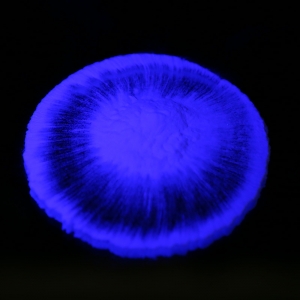
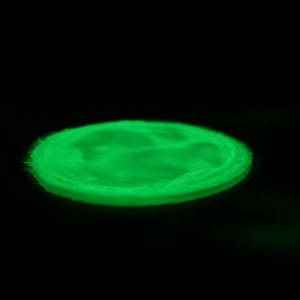

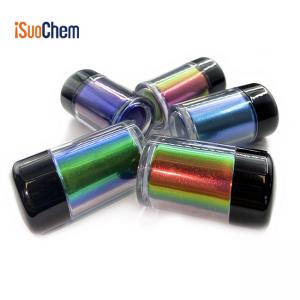
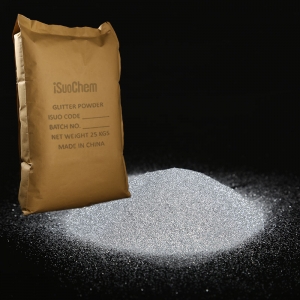
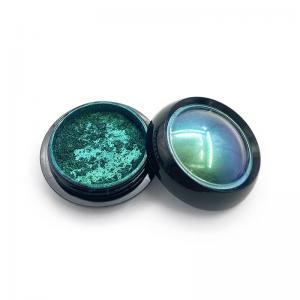






 +86 13965049124
+86 13965049124
 ไทย
ไทย  English
English français
français русский
русский italiano
italiano español
español português
português العربية
العربية 한국의
한국의 Tiếng Việt
Tiếng Việt






